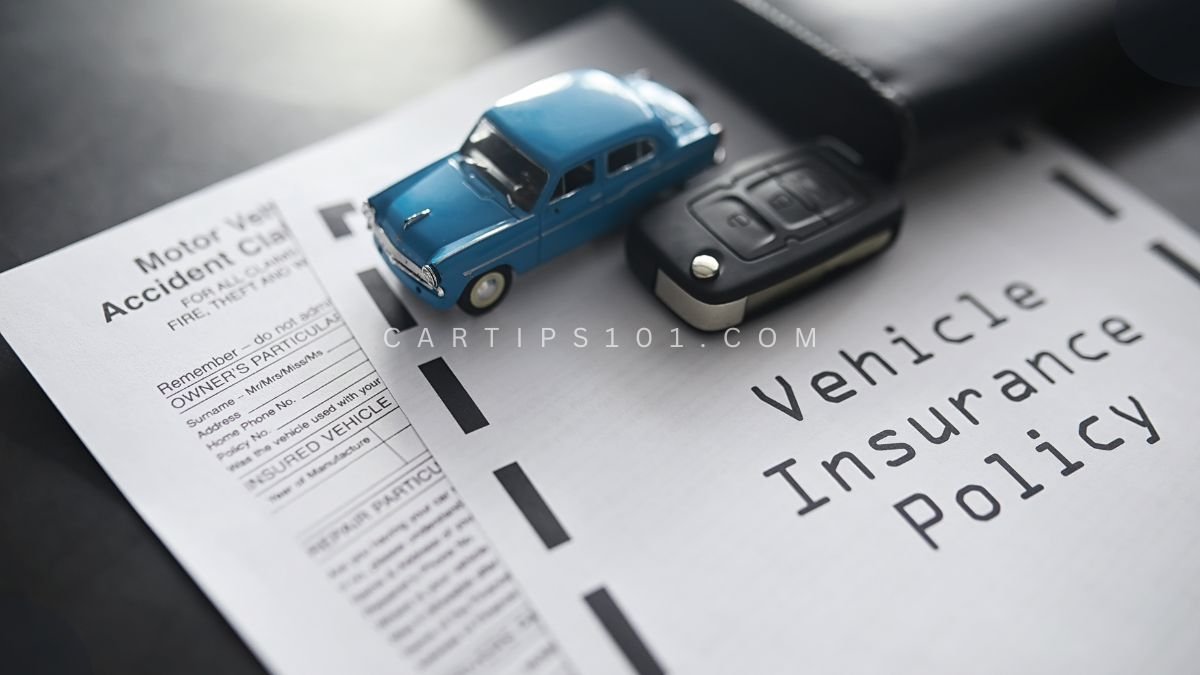When you finance a car, specific insurance requirements must be met to protect both you and the lender. Lenders typically require full coverage insurance, which includes liability, comprehensive, and collision coverage. This insurance ensures that if your car is damaged, stolen, or involved in an accident, the lender's investment is protected.
Breakdown of Insurance Requirements
- Liability Insurance: Covers damages to others and their property if you're at fault in an accident. It's mandatory in most states and protects you from financial loss due to legal claims.
- Comprehensive Insurance: Covers non-collision-related incidents like theft, vandalism, or natural disasters. It's required by lenders to ensure the car is protected from various risks.
- Collision Insurance: Covers damages to your vehicle resulting from a collision, regardless of who is at fault. This coverage is also required by lenders to maintain the car's value.
- Gap Insurance: Optional but recommended, gap insurance covers the difference between the car's market value and the loan amount if the car is totaled or stolen. It prevents you from paying out of pocket if the car's value is less than the loan.
- Uninsured/Underinsured Motorist Coverage: Protects you if you're hit by a driver with no insurance or insufficient coverage. Some states require this coverage, while in others, it's optional but advisable for added protection.
Tips for Choosing the Right Insurance for a Financed Car
- Compare Quotes: Obtain multiple insurance quotes to find the best rate for the required coverage.
- Understand Your Policy: Ensure you fully understand what each type of coverage includes and how it protects you and the lender.
- Consider Higher Deductibles: A higher deductible can lower your monthly premium, but ensure you can afford the deductible in case of a claim.
| Type of Insurance | Purpose | Required by Lenders? |
|---|---|---|
| Liability Insurance | Covers damages to others and their property | Yes |
| Comprehensive Insurance | Protects against non-collision incidents | Yes |
| Collision Insurance | Covers damages from collisions | Yes |
| Gap Insurance | Covers the loan amount difference if car is totaled | Optional, but recommended |
| Uninsured/Underinsured Motorist Coverage | Protects against drivers with no or insufficient insurance | Varies by |
Insurance Requirements for Leased Cars
Leasing a vehicle comes with its own set of insurance requirements. If you're leasing, Toyota Financial Services states that you need to have physical damage insurance for the full value of the vehicle, but with a maximum deductible of $1,000. The requirements are as follows:
| Insurance Type | Requirement |
|---|---|
| Physical Damage Insurance | Required for full value of the vehicle; maximum deductible of $1,000. |
| Liability Insurance | Minimum liability required by the state where the vehicle is garaged. |
| Collision Coverage | Typically required for leased vehicles. |
| Comprehensive Coverage | Often required to protect against various types of damage. |
In both financing and leasing situations, maintaining adequate insurance is crucial. Lenders may require additional coverages, such as uninsured motorist coverage or gap insurance, to further protect their investment. Understanding these requirements ensures that you meet your lender's expectations while keeping your vehicle protected.
Essential Coverages for Financed Cars
When you finance a car, understanding the insurance requirements is crucial for protecting your investment and ensuring compliance with lender expectations. Here are the essential coverages you need to consider.
Collision and Comprehensive Coverage
Most lenders require you to maintain both collision and comprehensive coverage to safeguard their investment while you have an auto loan. Collision coverage pays for damage to your vehicle in the event of an accident, regardless of fault. Comprehensive coverage, on the other hand, addresses damages from events beyond your control, such as vandalism, theft, or weather-related incidents.
| Coverage Type | Description | What It Covers |
|---|---|---|
| Collision Coverage | Pays for damage to your vehicle from accidents | Accidents with another vehicle or object |
| Comprehensive Coverage | Covers damages from non-collision events | Theft, vandalism, weather damage |
Lenders typically mandate a full coverage policy that combines both types of insurance along with liability insurance. This combination allows the financing company to protect its asset, which secures the loan in case of default.
Liability Insurance
Liability insurance is another essential requirement for financed cars. While it may not be the primary focus of lenders, it is crucial for legal compliance and protecting yourself financially. Liability insurance covers damages and injuries you may cause to others in an accident.
| Liability Coverage Type | Description | What It Covers |
|---|---|---|
| Bodily Injury Liability | Covers medical expenses for injuries to others | Medical costs, lost wages, legal fees |
| Property Damage Liability | Covers damages to someone else's property | Repair or replacement of their property |
When you finance a car, most lenders expect you to carry insurance above the state minimums. If you fail to purchase adequate coverage, your lender can obtain a policy for you and charge you for it (Yahoo Finance). It is essential to maintain the required insurance to avoid repossession of your vehicle or increased monthly payments based on heightened financial risk.
Additional Coverages for Financed Cars
When financing a car, it's essential to consider additional coverages that may be required or recommended by lenders. These coverages provide extra protection and peace of mind while you are making payments on your vehicle. Two important forms of coverage to consider are uninsured motorist coverage and gap insurance.
Uninsured Motorist Coverage
Uninsured motorist coverage is designed to protect you in the event of an accident with a driver who does not have insurance or does not have enough insurance to cover the damages. This coverage can be particularly important when financing a car, as lenders may require it to ensure that you are protected from potential financial loss arising from other drivers' negligence.
| Coverage Type | Description |
|---|---|
| Uninsured Motorist Coverage | Covers medical expenses and damages when involved in an accident with an uninsured driver. |
| Underinsured Motorist Coverage | Provides coverage when the at-fault driver has insufficient insurance to fully cover damages. |
Lenders often necessitate this coverage as part of "full coverage" insurance, which may include comprehensive, collision, and liability insurance (Progressive).
Gap Insurance
Gap insurance is crucial for those who finance or lease a car, especially if the vehicle's value depreciates faster than the loan balance. This type of insurance covers the "gap" between what you owe on your car loan and the current market value of your vehicle if it is stolen or totaled.
| Feature | Details |
|---|---|
| Purpose | Covers the difference between the car's value and the amount owed on the loan or lease. |
| Typical Requirement | Often required for leased cars, but beneficial for financed vehicles as well. |
| Payment Activation | Kicks in after the primary insurance (comprehensive and collision) pays out. |
Gap insurance can be a wise investment, especially if you finance a car for more than its actual worth. It helps ensure that you do not face a financial burden if your car is declared a total loss (Bankrate). Most lease contracts require the lessee to carry full coverage, which may also include a separate gap insurance policy (CNBC).
Both uninsured motorist coverage and gap insurance are vital components of a comprehensive insurance plan for financed cars. They provide essential protections to help you manage risks associated with driving and financing your vehicle.
Importance of Maintaining Insurance
Maintaining insurance on a financed car is crucial for both you and your lender. It ensures that you comply with legal requirements and protects your financial investment in the vehicle.
Requirements During Auto Loan/Lease
When you finance a vehicle, lenders typically require you to maintain comprehensive and collision coverage to protect their investment. This requirement is standard across most lending institutions. According to Toyota Financial Services, if you financed your vehicle, you must maintain physical damage insurance that covers loss or damage for the full value of the vehicle for the term of your contract.
Here’s a summary of the typical insurance requirements for financed cars:
| Insurance Type | Description | Requirement |
|---|---|---|
| Collision Coverage | Pays for damage to your vehicle regardless of fault | Required |
| Comprehensive Coverage | Covers damage from events like theft or vandalism | Required |
| Liability Insurance | Covers damages to others in an accident | Usually required but may vary |
Banks and lenders often require proof of insurance when you apply for a loan. You must keep the necessary coverages until the balance of the loan is repaid. If you fail to maintain the required insurance, your lender may purchase insurance on your behalf and add the cost to your monthly payments (Progressive).
Consequences of Lacking Insurance
Not maintaining the required insurance on your financed vehicle can lead to several consequences. Here are the key points to consider:
- Lender-Forced Insurance: If you do not have the necessary coverage, your lender can buy an insurance policy for you. This policy can be much more expensive than standard insurance, and you will be responsible for the cost (Yahoo Finance).
- Financial Liability: Without adequate insurance, you could be financially liable for any damages or accidents. If you are involved in an accident, you may have to cover repair costs out of pocket, which can be overwhelming.
- Impact on Credit Score: Failure to meet insurance requirements may negatively affect your credit score if it leads to missed payments or default on the loan.
- Legal Penalties: Driving without the required insurance can result in legal penalties, including fines and potential loss of your driving privileges.
Maintaining proper insurance coverage is essential not only to meet your lender's requirements but also to protect yourself financially while enjoying your vehicle.
Exploring Force-Placed Insurance
What is Force-Placed Insurance?
Force-placed insurance, also known as creditor-placed insurance, is a type of coverage that a lender purchases on your behalf if you fail to maintain the required insurance on a financed vehicle. If you drop any required coverages before paying off your car, the lender may take action and secure insurance for you. This cost is then added to your monthly loan payments (Progressive).
It is important to note that most force-placed insurance policies are designed to protect the lender's financial interests. This means that while the lender is covered, you may not have adequate protection for yourself. For instance, these policies often do not include liability insurance, which is necessary to cover damages and injuries to others caused by you or someone else driving your car. Liability insurance is required in nearly every state.
Cost and Implications
The cost of force-placed insurance can vary based on several factors, including the value of your vehicle, your location, and the specific lender. However, it's crucial to understand that this type of coverage is generally more expensive than purchasing a policy independently.
| Factor | Impact on Cost |
|---|---|
| Vehicle Value | Higher value leads to higher premiums |
| State | Insurance rates vary by state |
| Lender | Different lenders may charge differently |
Choosing not to pay the force-placed insurance can result in significant consequences. If you refuse to pay the cost associated with the creditor-placed insurance, your lender has the right to repossess the vehicle. This repossession not only leads to the loss of your car but also negatively impacts your credit report for years.
Understanding the implications of force-placed insurance is critical for anyone financing a car. It highlights the importance of maintaining adequate coverage to protect both your interests and those of your lender.
Specialized Insurance Add-Ons
When financing a car, you may encounter various specialized insurance add-ons that can enhance your coverage and potentially save you money. Understanding these options can help you make informed decisions regarding your vehicle's protection.
VIN Etching and Discounts
VIN etching involves engraving your vehicle identification number onto your vehicle’s windows and windshield. This process makes your vehicle easily identifiable and serves as a deterrent against theft. Insurance companies may offer discounts for having this security feature, which can lead to savings on your policy premiums. While you can have VIN etching done through your insurance provider, it can also be performed independently, allowing you to save money (Bankrate).
| Feature | Description | Potential Savings |
|---|---|---|
| VIN Etching | Engraving of VIN on windows | Discount on insurance premiums |
Extended Warranties and Service Plans
Extended warranties become effective after the manufacturer’s warranty expires and can cover repair costs that may exceed the price of common repairs. These warranties are often more expensive than standard repairs but can be combined with your auto loan for convenience. Additionally, service plans are typically included with extended warranties, covering scheduled maintenance checks.
Furthermore, some dealers offer tire and wheel protection, which covers costs of replacing tires and rims damaged by potholes or debris. While this coverage can be beneficial, remember that most tires come with their own warranty, making this protection potentially unnecessary.
Another common add-on is paint and fabric protection, which provides extra coatings to shield your vehicle's interior and exterior from damage. It's advisable to check if this feature is included with your new car model before purchasing it as an add-on.
| Add-On | Description | Consideration |
|---|---|---|
| Extended Warranties | Coverage after manufacturer warranty | Potentially costly |
| Tire/Wheel Protection | Covers damage from road hazards | Check for existing tire warranties |
| Paint/Fabric Protection | Shields against damage | Verify inclusion with new car |
By exploring these specialized insurance add-ons, you can tailor your coverage to better suit your needs while potentially saving money on your financed vehicle.
Final Thoughts: What Are the Insurance Policies for Financed Cars?
Understanding the insurance requirements for a financed car is crucial for both protecting your investment and fulfilling your lender's obligations. By ensuring you have the right coverage in place, you can drive with peace of mind, knowing you're financially protected against unexpected events. Always review your policy details and shop around for the best rates to meet your needs and budget.
FAQs about Insurance Policies for Financed Cars
Q: Do I need full coverage insurance for a financed car?
A: Yes, most lenders require full coverage insurance, which includes liability, comprehensive, and collision insurance. This protects both you and the lender if the car is damaged or involved in an accident.
Q: What is gap insurance, and do I need it for a financed car?
A: Gap insurance covers the difference between the car's market value and the remaining loan balance if the car is totaled or stolen. While it's not always required, it is recommended to prevent out-of-pocket expenses if the car's value is less than the loan amount.
Q: How can I lower my insurance premiums on a financed car?
A: To lower your insurance premiums, consider increasing your deductible, maintaining a clean driving record, and bundling your car insurance with other policies like home insurance. Additionally, shopping around for quotes can help you find more affordable options.
Q: Can I drop full coverage once my car is paid off?
A: Yes, once your car is paid off, you are not required to have full coverage insurance by the lender. However, you may still want to keep comprehensive and collision coverage if your car is valuable or if you want to protect against potential repair costs.
Q: What happens if I don’t maintain the required insurance on my financed car?
A: If you fail to maintain the required insurance, your lender may purchase a force-placed insurance policy, which can be more expensive and may not provide the coverage you need. Additionally, not having the required insurance can lead to repossession of the vehicle or other legal consequences.
Image Source: Paid image from CANVA





